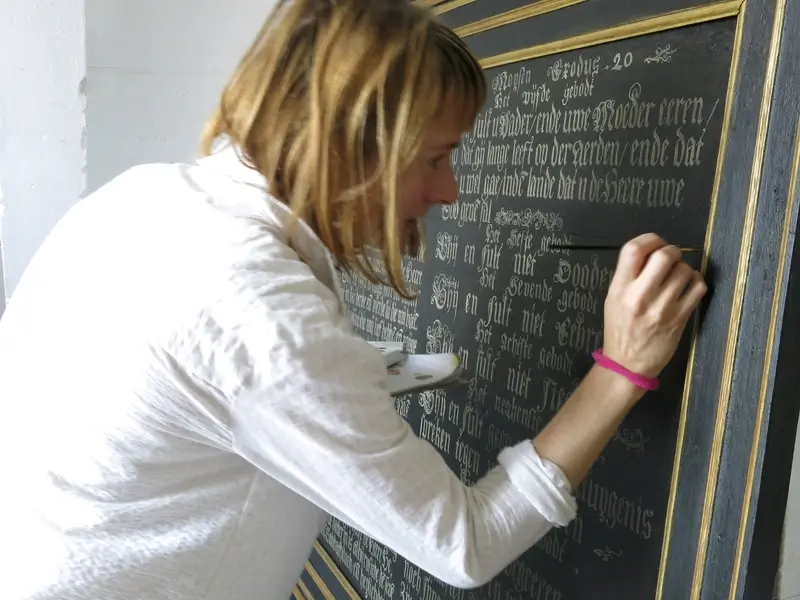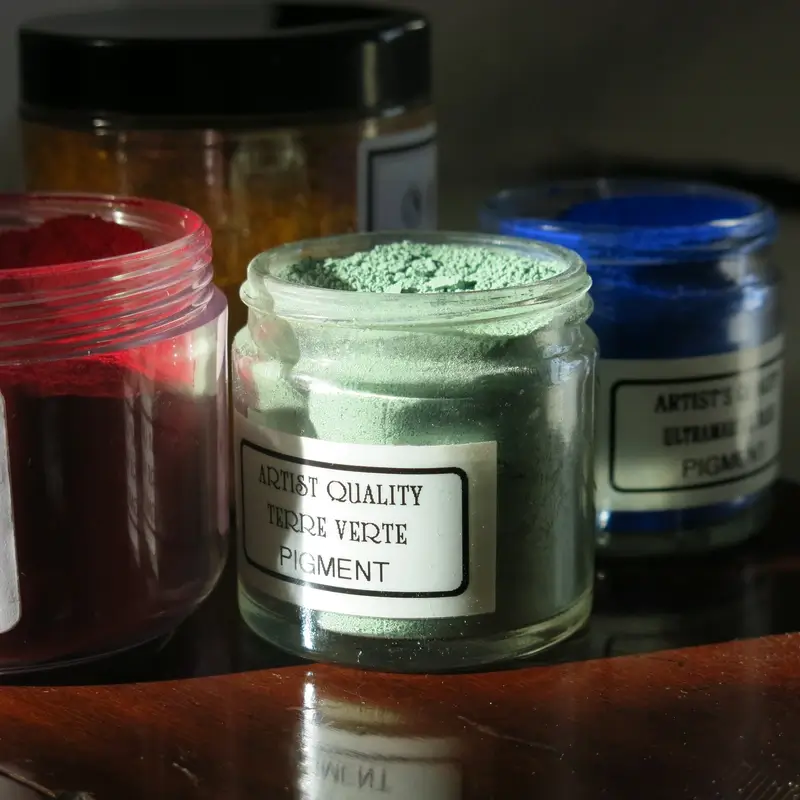How I work

What I do
I specialise in the conservation and research of paintings on canvas, wood, metal or board. These can be painted objects as well. I also carry out architectural paint research of historical paint schemes.
With a focus on implementing preventive conservation measures where appropriate. These are often low intervention and sustainable actions with an aim to slowing down the ageing process by improving the stability of an object and its environment.
When a painting or painted object requires conservation or restoration, I look at a range of remedial options.
My aim is to find the most appropriate treatment for an object, one that is best suited to the needs and goals of the project and client. I aim for the least interventional treatment and work in accordance with the ethical guidelines set out by ICON.
I find it most productive to work in collaboration, both with the client and fellow conservators. And when beneficial, with a conservation scientist for technical questions and examination.
Different treatment options always present themselves, and can be explored and discussed together.
All my work is documented in written and photographic form, also to ensure that you have the information you need after a project is completed.

“Art is a way of preserving experiences, of which there are many transient and beautiful examples, and that we need help containing.”
Alain de Botton & John Armstrong, 2016
WHO IT’S FOR

WHY IT’S SPECIAL
Each object has a story to tell. Its value can be artistic, historic, personal, or else a combination of these and more. By caring well for it, we ensure that its story can continue to be told and re-interpreted. This is what I aim to contribute to with my work. An historical artefact connects us – in the present, and with the past. Interpretations and ideas can change over time, and as they do so this may alter the way that we display and conserve an object. Questions about the (changing) significance of an object, or what new connections we can make, often arise. Is there more we can learn or uncover? Such questions can help define the way we choose to conserve an object.
Research into the materials and techniques as well as the degradation processes in support, ground, paint and varnish layers, means that we have a better understanding of the changes that can occur due to ageing processes. These changes may be a cause for treatment, more cautious handling and display, and they can also become part of an object’s history. The more we investigate and understand, the better we can adapt our conservation work to these natural degradation processes. With respect for an object’s age and history and an openness and curiosity into the possibilities of getting closer to the original work during research and treatment.
WHAT TO DO NEXT
If you would like to discuss a project, or have questions about an object in your care, please feel free to get in touch. As each object is unique, it helps to talk it through together to get an idea of what is best required, and which steps can be taken.
In general, I will always examine an object to assess its condition and treatment options. Work may be carried out in the studio or on site, depending on the nature of the project.
My goal is to provide the best service that I can. You are welcome to ask any questions both during and after a project, also to ensure that we get the best long-term results for the object.
